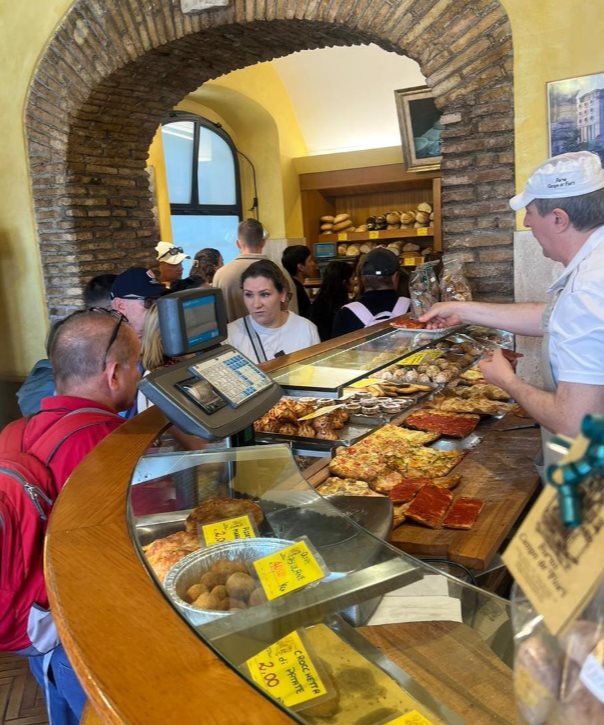
7 Days In Rome: How To Spend One Week In Rome
Feb 2, 2022
Today we are going to talk about the great and magnificent city of Rome! Italians use to say: “Rome caput Mundi”, that in English means “Rome, the capital of the world”. There are plenty of reasons why it is called like that. Some of the best attractions in Italy are placed there, so if you are planning one week in Rome, you better be well organized.
It is quite easy to walk around Rome, and you should walk through it. There are a lot of surprises and wonderful monuments! The biggest part of the city gives you the feeling of the ancient Roman empire. It gets you quite involved in the roman atmosphere, and you think that soon, you will meet a gladiator on the next corner!
Rome is home to excellent food, coffee, ice cream, good weather, surprises, architecture, monuments and a very active night-life. What else do you need? Let’s not waste more time and start with the itinerary of how to spend one week in Rome in the best possible way.
Day 1 – Caesar Shuffle
Colosseum to the Forum – Capitoline Museums – Victor Emmanuel Monument viewpoint – Pantheon
Make the “Caesar Shuffle” itinerary on your first day in Rome. From the Colosseum to the Forum,
Museums, Victor Emmanuel Monument viewpoint, Capitoline and Pantheon. Spend the late afternoon walking and feeling the atmosphere of Rome and don’t forget to enjoy the typical local food.
Day 2 – Museums and the city
National Museum of Rome – Baths of Diocletian – Trastevere Walk
In the morning, visit the National Museum of Rome and the nearby Baths of Diocletian.
The National Roman Museum is a group of museums in Rome made of four branches in several places in the city. It was founded during the unification of Italy, in 1889 and was inaugurated a year later with the objective of collecting antiquities from the fifth century BC until the third century AD.
The Baths of Diocletian were the biggest thermal complex of Ancient Rome. These baths were built by Emperor Diocletian in 305 AD with capacity for more than 3,000 people. End the day with the Trastevere Walk to get some amazing views of the city.
Day 3 – The Vatican
Sistine Chapel and Saint Peter’s Basilica tour – Vatican Museum with Dinner
The third day is a visit to the Vatican, but you can enjoy the afternoon and evening as you wish. After two long days, we are ready for the amazing religious state of Vatican.
While being in the Vatican, don’t miss St. Peter’s Basilica, dome climb, and enjoy the Vatican Museums tour. Spend your afternoon shopping and then take the local passeggiata by walking along Via del Corso. You can start at Piazza del Popolo and finish the walk at Piazza Venezia for great sunset views.
There are also plenty of other interesting attractions to visit, but the most important places to visit are the following: St. Peter’s Square (Piazza San Pietro), Vatican Museums and the St. Peter’s Basilica where the Sistine Chapel is located.
Day 4 – Food and Wine
Groceries & Cooking – Wine Experience – Rome Tiramisù

Roman cuisine is known for being flavourful, simple and satisfying. You can’t say you experienced the best of Rome if you haven’t tasted the traditional food and some Italian wine.
The cuisine is based on old-school traditions, dishes in the capital have their roots in ‘poor man’s food’ and are often prepared using few ingredients in creative ways. It constituted a cuisine that is full of character and pays homage to the local delicacies in the Lazio region.
From the city’s favorite street foods and its famous pasta dishes to vegetable and offal stews, while being in Rome, you have to taste every local food.
Day 5 – Heart of Rome
Ostia Antica – The Spanish Steps

The Spanish Steps date from 1723 and till now, are the widest steps in the world. While climbing the Spanish steps, you find yourself between the Piazza di Spagna at the base and Piazza Trinita dei Monti at the top dominated by Trinita dei Monti Church. The steps are located at the eastern end of the old city center.
Nowadays, Ostia Antica is a large archaeological site. It is located just 30 km on the west of Rome and on the River Tiber. During ancient Rome, it was one of the most thriving cities in the region thanks to its status as Rome’s harbor city.
After the collapse of the Empire, the city fell into decadence, was eventually abandoned and remained untouched and magnificently preserved for centuries.
Day 6 – Unesco Jewels
Tivoli and its Villas – Borghese Gallery and Gardens

The Borghese Gallery owns one of the world’s greatest private art collections assembled by Cardinal Scipione Borghese in the 17th century. This magnificent art is situated in his former Roman garden villa.
The collection is particularly rich in ancient Roman, Baroque art, Renaissance, and with major works by Bernini, Titian, Raphael, Correggio, Caravaggio, Rubens, and Canova. Also, visit the most famous gardens as Villa Doria Pamphili,
Botanical Garden, Vatican Gardens, Orange Garden, Parco degli Acquedotti
Visit the Borghese Gallery (reservation required) and the churches I group as the key elements of “Pilgrims’ Rome”: San Giovanni in Laterano, Santa Maria Maggiore, and San Clemente.
Day 7 – Naples and Pompeii
Day-trip – Naples and Pompeii

Even if you are a die-hard independent traveller where you treasure the freedom of doing your own thing at your own pace there is little information at either Pompeii or Herculaneum will for sure help you interpret what you are seeing. You will be wise to invest in a tour guide while being there.
 Spanish
Spanish French
French Chinese
Chinese German
German







